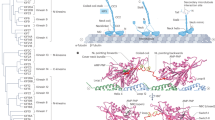Abstract
Kinesin-1 is a homodimeric molecular motor protein that uses ATP and a hand-over-hand motion to transport cargo along microtubules. How kinesin converts chemical energy into directed motion is a question that has been actively studied since its discovery. Even at the most coarse-grained level of chemical kinetics, understanding is still lacking. Minimal kinetic models are often developed to both explain kinesin’s hand-over-hand forward-stepping behavior and to infer important kinetic rate constants from experimental data. These minimal models are often limited to a handful of two-headed states on a core cycle and have been essential for the current level of understanding. However, it is not always clear how to evolve these core-cycle models to explain more complex behavior such as non-processive motion. We have taken a different approach and have developed a kinetic model without a pre-defined core cycle. Our model includes 80 two-headed states and permits transitions between any two states that differ by a single catalytic or binding event. We constrain the rate constants as much as possible by published experimental data. We define many of the remaining unknown rate constants based on mechanical strain in the kinesin neck linkers and their docking state. We present a one-dimensional model for neck-linker modulation of head binding and unbinding rates and nucleotide binding and unbinding rates. We show that our model reproduces a run length (processivity) and run time in the range of experimental results. The core cycles that emerge are slightly different than those commonly discussed. We also explore how processivity and speed change with neck linker length. Our modeling applications are available as LabVIEW open-source code and compiled executables for PCs, which will allow other research groups to adapt the model and rate constants and may aid in general understanding of molecular motor behavior.
Similar content being viewed by others
Article PDF
Author information
Authors and Affiliations
Corresponding authors
Rights and permissions
About this article
Cite this article
Koch, S., Herskowitz, L. A Discrete State Model for Kinesin-1 with Rate Constants Modulated by Neck Linker Tension. Nat Prec (2010). https://doi.org/10.1038/npre.2010.5038.1
Received:
Accepted:
Published:
DOI: https://doi.org/10.1038/npre.2010.5038.1



